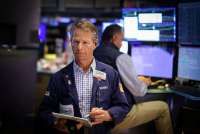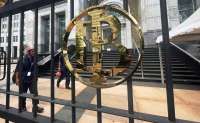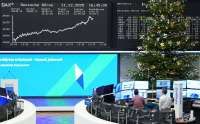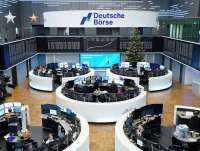FEDERAL RESERVE - WASHINGTON. The Federal Reserve completes its latest policy meeting on Wednesday with attention turning from its massive response to the coronavirus pandemic and toward its still-developing plans to strengthen and lengthen a nascent economic recovery.
An employment report showing 2.5 million jobs were created in May surprised economists with the speed at which firms started rehiring workers laid off en masse as virus-containment efforts forced businesses to close and consumers to stay home.
While a source for some optimism, Fed officials have been uniform in saying economic statistics for now are less important than progress in the health crisis. The economy is officially in a recession that began in February, and policymakers agree risks will remain high until it is clear a second wave of infections won't force people back indoors.
But amid the gloom of around 20 million jobs lost since February, an economy probably shrinking at a Depression-era pace, and more than 111,000 Americans dead because of the virus, stock markets are back near pre-crisis highs and bond markets stabilized by Fed actions are funding struggling firms like department store Macy's.
The depth of the job losses and the historic nature of the risks still ahead are likely to keep the Fed emphasizing its promise of loose monetary policy for perhaps years to come, and to eventually put more concrete policy commitments behind it, analysts agree.
"The economic outlook should remain cautious despite an encouraging turn in high-frequency data and initial signs of rehiring," wrote Kathy Bostjancic, chief U.S. financial economist for Oxford Economics. The unemployment rate is expected to remain high and inflation below the Fed's 2% goal through at least next year "even with a robust rebound ... and there is still the risk of a second wave" of infections.
Consumer prices fell for a third straight month in May, the Labor Department reported on Wednesday, and its measure of underlying inflation dropped to the lowest since 2011.
The Fed's perceptions about the future will be provided in policymakers' economic projections, the first such update since December, before the pandemic torpedoed a decade-long expansion.
The projections and the Fed's policy statement will be released at 2 p.m. (1800 GMT), followed by Fed Chair Jerome Powell's news conference at 2:30 p.m. EDT (1830 GMT).
Action on Wall Street was mixed on Wednesday ahead of the release of the Fed's policy statement, with the S&P 500 Index down about 0.5% and the Nasdaq Composite, which recently hit a record-high level, up 0.3% in late-morning trade.
Read Also: Indonesia reports biggest daily rise in coronavirus infections
PROMISE OF SUPPORT
The statement and Powell are likely to repeat a now-standard promise since the early days of the crisis to keep interest rates set near zero and provide whatever support is needed until the economy is "on track" to meet the Fed's full employment and inflation goals.
That has already prompted the Fed to offer trillions of dollars in broad support to financial markets, just as it did in the 2007-2009 financial crisis and recession. But it has gone much further this time, collaborating with the U.S. Treasury on programs to buy corporate and municipal bonds, and offer loans to small and medium-sized firms in the "real" economy as well.
Those programs are meant as a kind of failsafe for local governments and companies to help weather the sudden loss of tax revenue and income provoked by the pandemic.
But ideally they should be short-term stopgaps. For the longer run the Fed will face a series of choices about how to guide the economy to where it was in 2019, with record-low unemployment, rising wage gains for lower-income workers and steady growth.
It could take years, and at some point the Fed is expected to make a more explicit commitment about how long rates may need to stay near zero, or the level of bond-buying it feels is appropriate to provide additional support along the way.
It is also likely to consider new sorts of promises, such as pledging to keep longer-term interest rates at a specific level, a strategy known as yield curve control.
That may not happen at this meeting. But Powell will likely make clear the Fed is already looking to the long term and what will be needed for the economy to claw back to where it was.
The new projections may show policymakers expecting to leave rates near zero perhaps until 2023, and the statement and Powell will likely back that up, said Krishna Guha, vice chairman of Evercore ISI and a former New York Fed staffer.
"The Fed will signal that it remains focused on the huge gap in levels between its ... goals and current economic conditions," Guha wrote, predicting the statement, projections and Powell news conference will be dovish across the board.
Read Also: Oil falls towards $40 as U.S. inventory rise revives glut worries
/2019/07/11/1358215927p.jpg)









